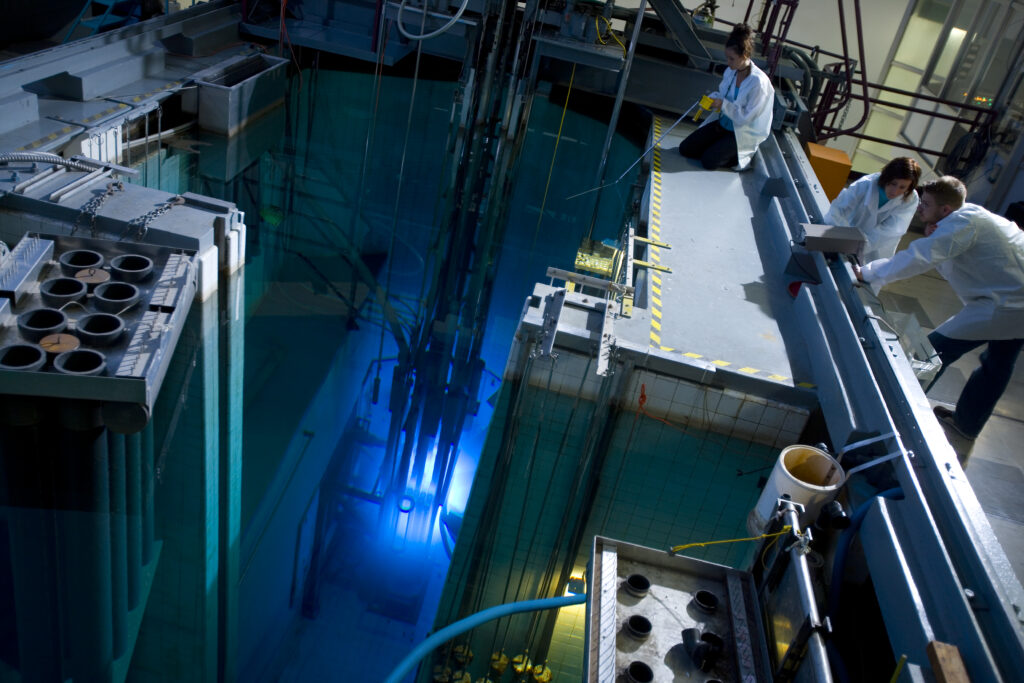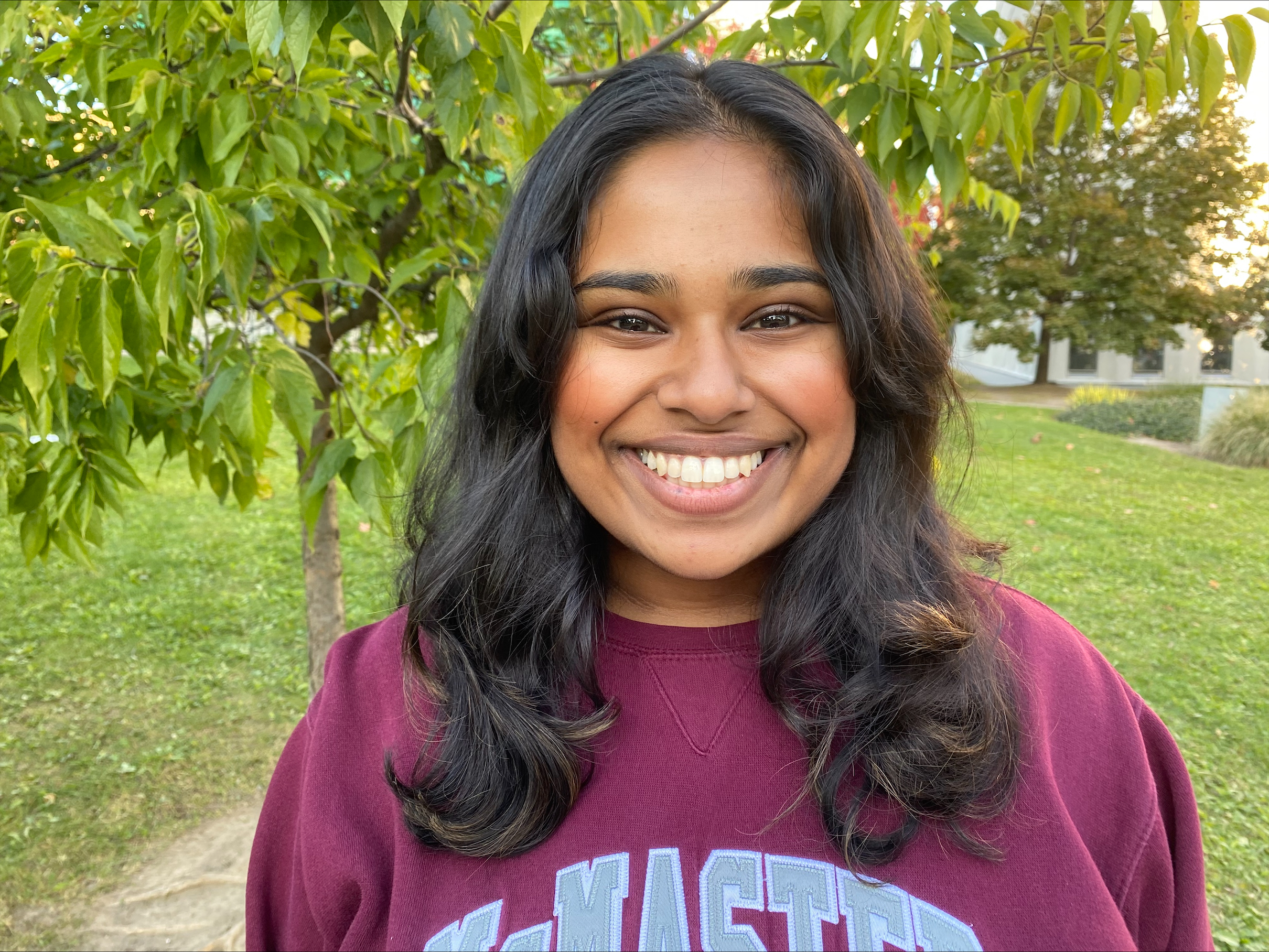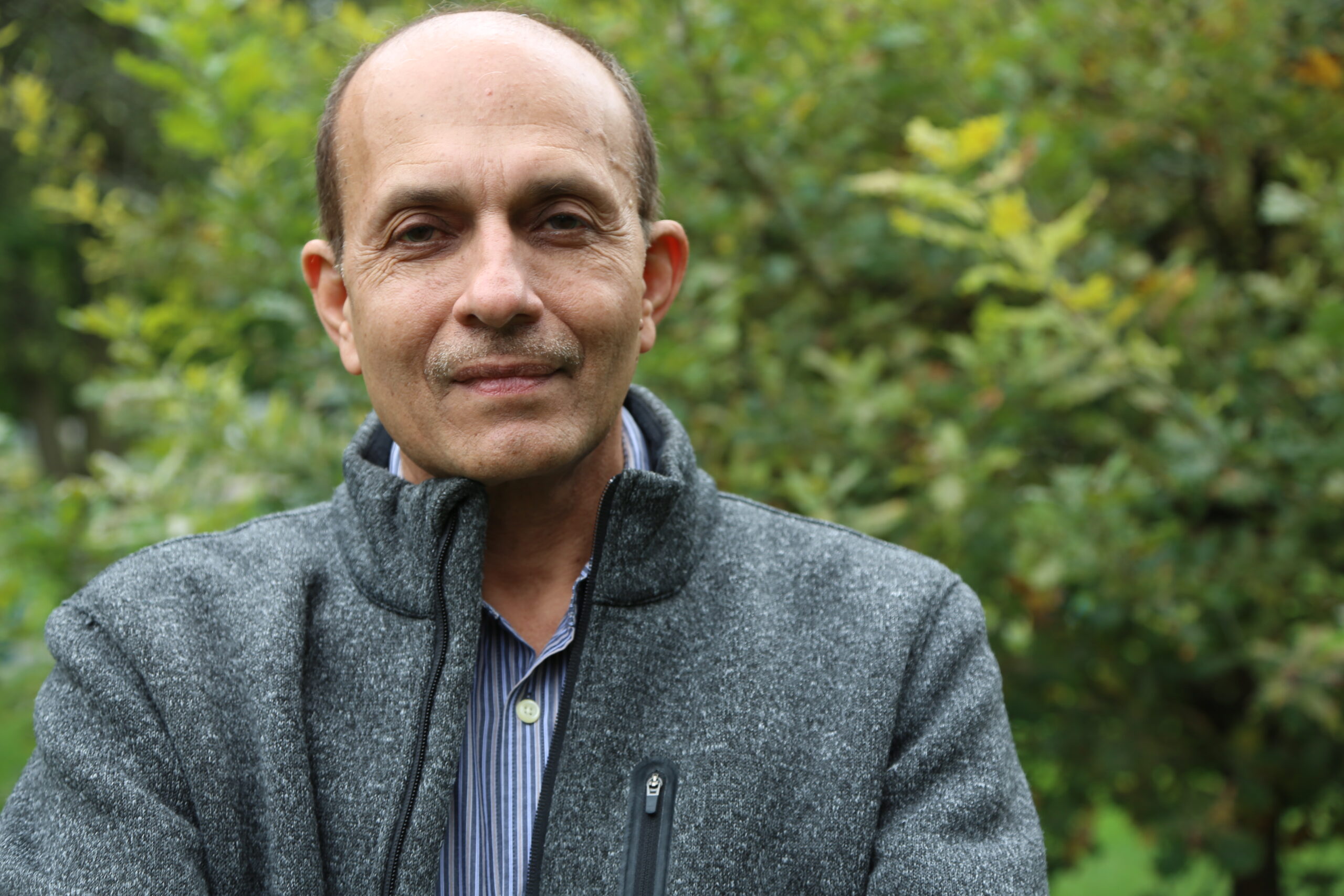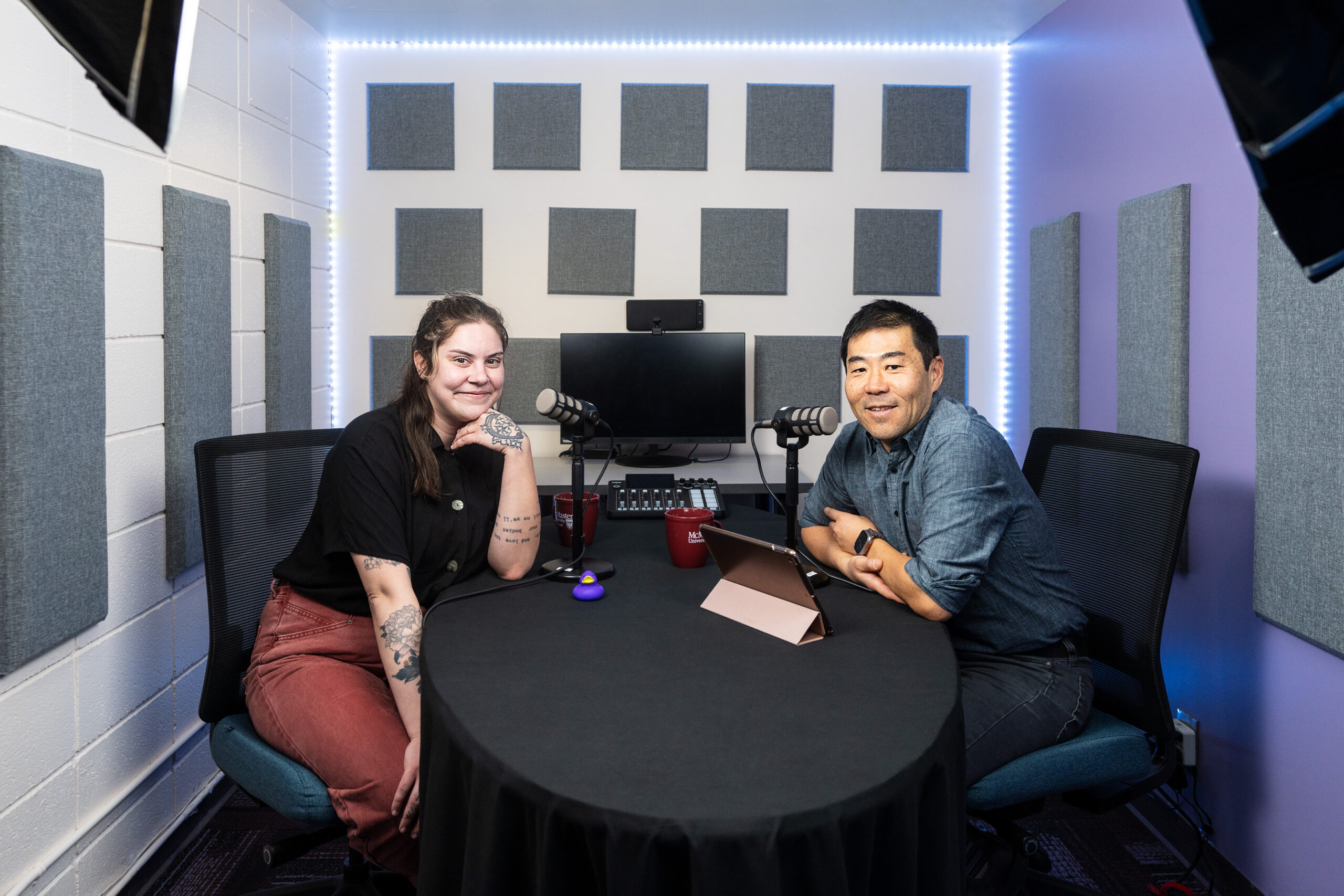Student tour guides pull double duty as ambassadors for McMaster and the nuclear industry

“Never” is the answer to the most frequently asked question during tours of the McMaster Nuclear Reactor with Michelle Yap.
“People always ask if anyone’s ever fallen into the reactor pool,” says Michelle, a Medical Physics graduate student who’s one of 20 tour guides working at the reactor. “No one’s ever gone for an accidental swim.”
Health and safety measures and vigilant tour guides have kept everyone out of the pool since the reactor came online 65 years ago. But should someone ever fall in, the radiation level’s so low that soaking wet and mortified are the worst things that’ll happen.
Lots of visitors assume the reactor’s powering the entire campus, confusing the reactor with the university’s power plant. “Our reactor was originally designed for research so there wasn’t a focus on harnessing its heat to produce electricity,” says Michelle, who adds that plans are underway to collect the reactor’s waste heat and help make the campus more energy efficient.
 Here’s what else Michelle talks about during her hour-long tours. The reactor began operating in April 1959, becoming the first university-based research reactor in the Commonwealth of Nations. Today, it’s the most powerful research reactor at a Canadian university. It produces half of the world’s supply of iodine-125 – a radioisotope that’s used to treat various cancers. It’s also used for neutron radiography and to irradiate samples for biomedical research, material science and geological surveys.
Here’s what else Michelle talks about during her hour-long tours. The reactor began operating in April 1959, becoming the first university-based research reactor in the Commonwealth of Nations. Today, it’s the most powerful research reactor at a Canadian university. It produces half of the world’s supply of iodine-125 – a radioisotope that’s used to treat various cancers. It’s also used for neutron radiography and to irradiate samples for biomedical research, material science and geological surveys.
Looking down into the pool at the reactor’s core is the highlight of every tour for both visitors and Michelle. “The blue glow of the Cherenkov radiation at the reactor core always draws people in. The core may seem like something that should be hidden away but it’s entirely safe to view based on the reactor’s design.”
As an undergrad, Michelle knew McMaster had a nuclear reactor on campus – she walked past it on her way to labs and lectures. But she didn’t realize it was open to visitors – more than 4,000 people tour the reactor each year.
Michelle visited the reactor for the first time during a fieldtrip in an elective course about radioisotopes in medicine. When Nuclear Operations & Facilities announced it was hiring tour guides, Michelle applied and got the job.
Like Michelle, most people get their first introduction to nuclear science during a tour of the McMaster Nuclear Reactor. That makes the reactor’s tour guides more than just university ambassadors, says Erica Dao, Manager of Nuclear Outreach & Education. “They’re also ambassadors for the entire nuclear industry.”
Erica’s seen the calibre of students who work at the reactor – she was a tour guide from May 2014 to December 2022 while earning her master’s and PhD in Radiation Science. She was also the teaching assistant for one of Michelle’s first-year courses – her enthusiasm for medical physics convinced Michelle to follow the same path.
“Michelle’s one of our best and brightest tour guides,” says Erica. “She leads every tour with great enthusiasm and her passion shines through.”
Before leading their own tours, new hires go through extensive training with Nuclear Operations & Facilities staff, learn everything there is to know about the reactor’s history, operations and research projects and shadow experienced guides. They can also give the backstory of every item in the lobby’s cabinet of radioactive curiosities.
“I’m passionate about teaching and this is the perfect opportunity to educate the community about the field that I’m studying as a medical physics student,” say Michelle. The added bonus is the job’s flexibility – “you can sign up to lead tours that work within your own schedule.”
And there are few other universities where students can put nuclear reactor tour guide on their resumes and LinkedIn profiles.
Complimentary tours of the McMaster Nuclear Reactor are available Monday to Friday from 9 a.m. to 4:30 p.m. All visitors must be at least 11 years old. To schedule a tour, email mnrtours@mcmaster.ca.
Graduate students, OutreachRelated News
News Listing

From NOVA to Brain Bee to PNB – lifelong love of neuroscience led to McMaster
Alumni, Outreach, Students
October 18, 2024

“Unparalleled dedication to student growth and climate science” – Professor’s local initiatives have global impact
Outreach, Partnerships, Research excellence, Sustainability
September 30, 2024

Postdoc makes it personal when talking about their research
Outreach, Postdocs, science communication, Uncategorized
September 17, 2024
